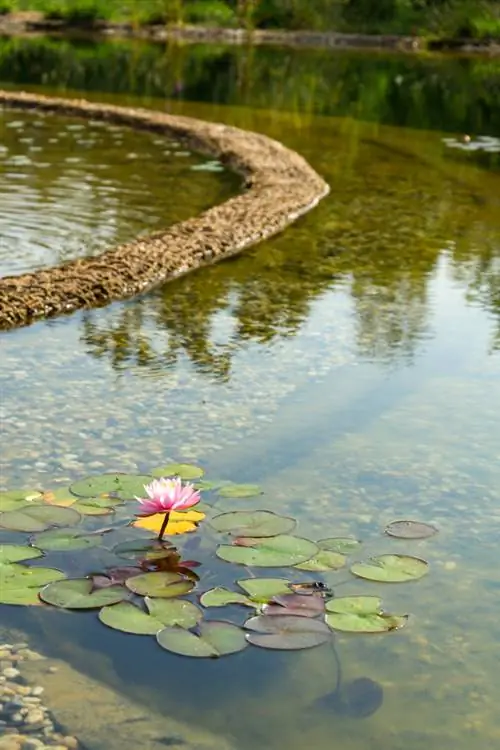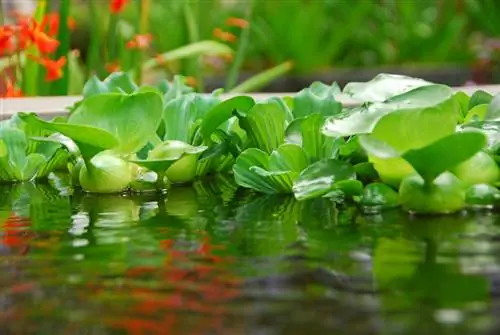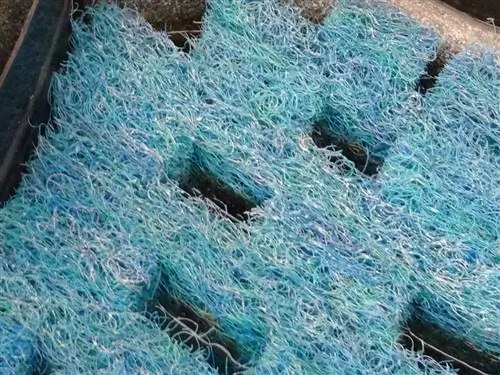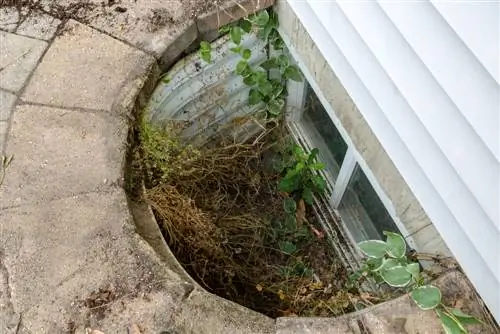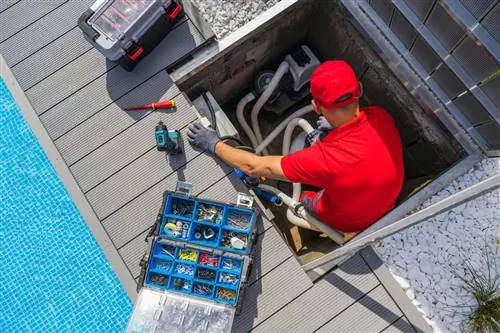- Author admin [email protected].
- Public 2023-12-25 17:45.
- Last modified 2025-01-23 11:19.
There are various established options for keeping a garden pond clean. Which of these is suitable depends on the size of the pond, the function of the pond and the ecological requirements of the owner. Here we take a closer look at the filter ditch.
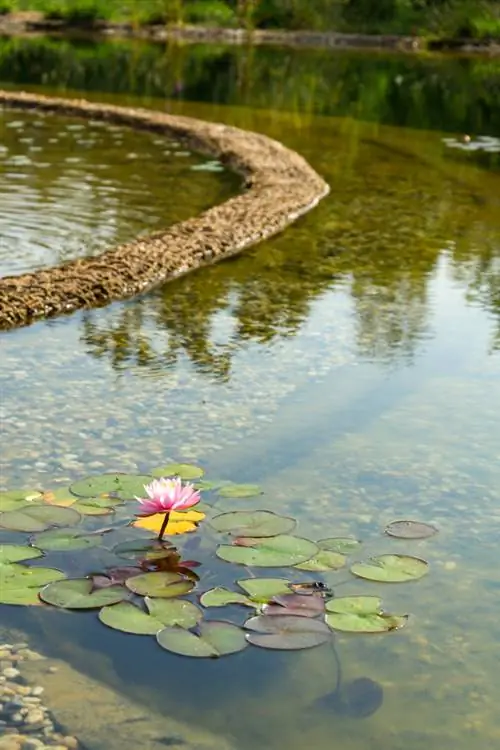
What is a filter ditch and how does it work?
A filter ditch is a natural filter chamber for garden ponds that purifies the water using plants such as calamus, cattail, frog bite, crab claw and water star. For fish ponds or swimming ponds, the filter ditch should take up at least 20% of the pond size.
The filter ditch as a natural filter chamber
One thing in advance: The pond filter option of the filter ditch is only suitable for large properties. Depending on the pond function, the ditch must take up a significant proportion of the volume of the pond itself. The ditch must be particularly large for ponds that are particularly burdened by a lot of water movement and foreign body infiltration. These mainly include:
- Ponds with fish stocks
- Swimming ponds
For these types of ponds, the filter ditch should take up at least 20% of the pond size. For fish ponds with a high population density, it is even advisable to make the filter ditch the same size as the pond itself.
How the filter trench works
A filter trench is created near the pond and connected to it via an underground hose. Its job is to constantly flush the pond water in the form of a filter pump system and release it back into the pond after it has been cleaned. This means: A circulation pump (€127.00 on Amazon) at the end of the trench is usually still necessary. It conveys the water from the ditch inlet to the outlet and back into the pond. The difference to the complete filter pump system: The water purification takes place instead of the filter inserts.
The cleansing power of plants
A filter ditch must therefore be equipped with plant species that have a particularly high nutrient turnover. In addition to suspended solids, they are also supposed to break down amino acids, convert nitrate into nitrogen and release oxygen. Plants that can do this well include:
- Calmus
- Bulbs
- Frogbite
- crab scissors
- Water Star
If you use such clarification plants in the filter trench, you can plant your pond purely according to decorative aspects. In order to optimally design the clarification process from coarse to fine, you should plant reeds and floating leaf plants at the beginning of the trench and further back, more finely branched underwater plants.
Shape and structure of the trench
So that the water flow can proceed as undisturbed as possible, the ditch should ideally be straight. This also makes it easier to build and lay out with foil. In the initial area you should fill the trench with pebbles that are as lime-free as possible. So that the ditch causes as little disruption as possible and does not take up as much usable space in the garden, it makes sense to create it on a long edge.

